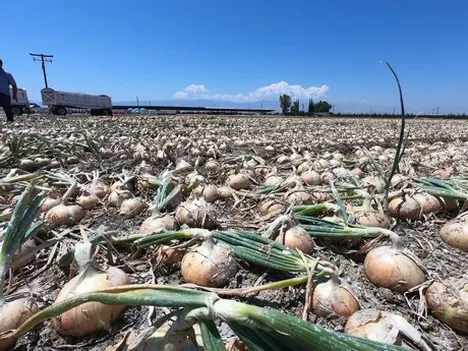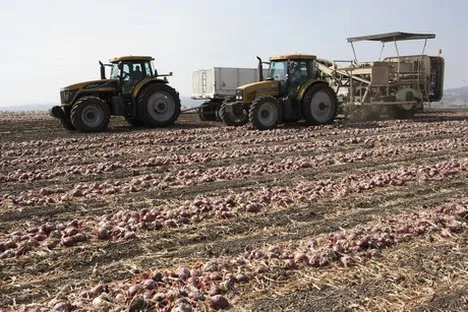The spring crop of California onions looks strong.
“Things are looking great in our growing regions,” says Megan Jacobsen of Oxnard, Ca.-based Gills Onions, a fresh-cut processor that grows all of its own supply. Gills grows in three regions of California: the Imperial Valley; Bakersfield and the Salinas Valley. “Imperial is getting ready to harvest onions in April and they look extremely strong. We’re predicting to start on time the week of April 15th,” says Jacobsen. Production on both red and yellow onions then switches to Bakersfield around June 1st and then to the Salinas Valley (which starts planting next month) in August-September.

“Right now for us, we’re in the last few months of storage season and our supply is strong,” says Jacobsen. “But we’re looking forward to harvest and having a fresh supply again.”
Demand for peeled/diced
Over on the processing side, Jacobsen notes that demand meanwhile continues for fresh-cut processing, particularly on the foodservice side of the business. “Foodservice is well over 70 percent of our business. With the way labor is going up in the country, the whole peeled/diced program continues to grow at a very rapid pace,” she says. “In the last five years we’ve seen the increase but in the past two years, with the way that minimum wage has gone up, we’ve seen the California impact as well.” Yellow, which is more of a cooking onion, tends to generally have stronger demand than red onion, which is the type of vegetable featured in salads and sandwiches.

That said, she does note that demand is also increasing on the retail side as well. “The addition of value-added produce to the millennial generation and now knowing that more than 50 percent of millennials are mothers who often do the grocery shopping, the demand for value-added produce continues to grow with this younger generation and their buying power,” says Jacobsen.
For more information:
Megan Jacobsen
Gills Onions
Tel: +1 (559) 284-4851
mjacobsen@gillsonions.com
www.GillsOnions.com
